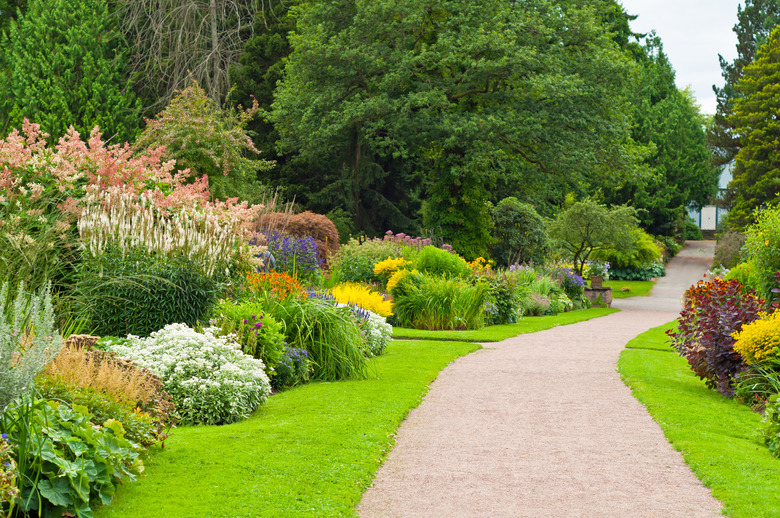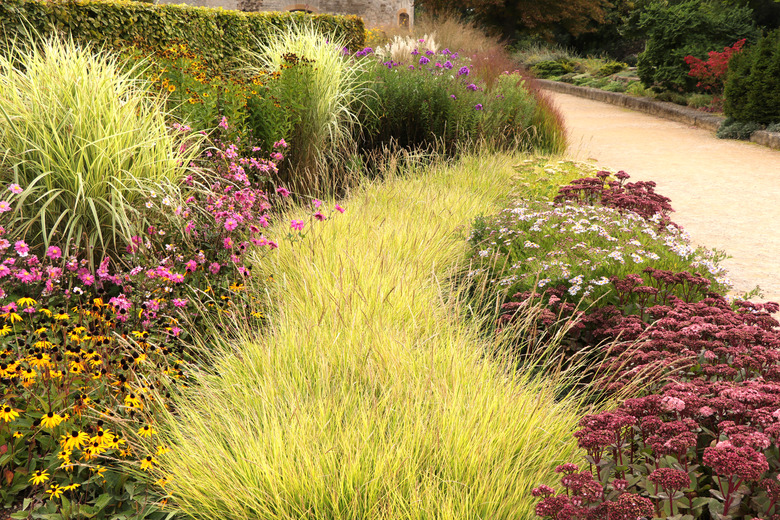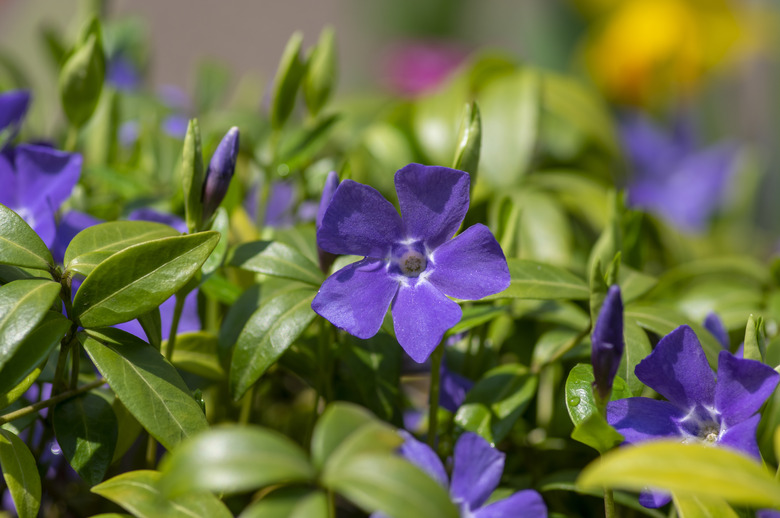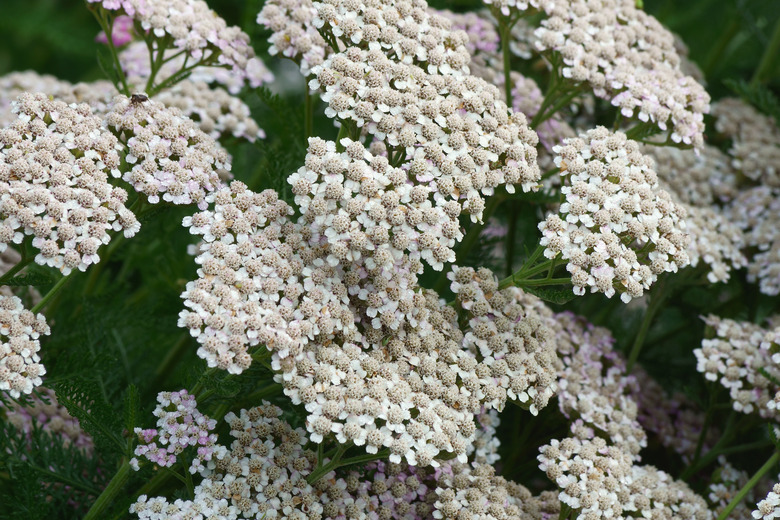4 Best Ground Cover Options For Yards With Full Sun And Clay Soil
We may receive a commission on purchases made from links.
Areas with full sun and clay soil can be a challenge to cover with plants. Not all plants can handle hours of sun every day, and clay soil is heavy and holds water, which isn't compatible with plants that need well-drained soil. Working organic matter into the clay soil along with regular applications of composted mulch can help improve the quality of the soil. Choosing ground cover options that grow well in those conditions can also transform the area into a lush, beautiful space.
1. Native Grass Options
1. Native Grass Options
Native grasses are excellent ground coverings for sunny clay sites. Deeply rooted sand dropseed (Sporobolus cryptandrus) produces graceful clumps of fine-textured foliage for natural meadow settings or as ground covering garden accents. Prairie dropseed (Sporobolus heterolepis) grows to 15 inches tall and slightly wider, with pinkish, popcorn-scented summer flower plumes.
Grama grasses (Bouteloua) create attractive meadows. Blue grama grass mowed to 1.5 inches is an acceptable turfgrass. Buffalo grasses (Buchloe) prefer heavy clay soil in areas of low rainfall and are available in several climate-specific hybrid varieties.
2. Varieties of Vincas
2. Varieties of Vincas
Different types of vincas tolerate clay and sun exposure well, making them a good ground cover candidate. Greater periwinkle (Vinca major) is aggressive; rooted cuttings spaced at 6 inches cover an area within a year. It's less likely to become invasive in full sun. Flowers appear in spring and are attractive blooming along with interplanted daffodils. Vinca "Variegata" has white-edged leaves.
Dwarf periwinkle (Vinca minor) is smaller and less aggressive. Several varieties provide flower color choices from white to deep blue or variegated foliage. Vincas produce darker foliage in shaded areas but flower more profusely in full sun.
3. Various Yarrow Plants
3. Various Yarrow Plants
Yarrows (Achillea) are tough, versatile perennials with attractive, ferny foliage and colorful, long-lasting summer flowers. Yarrows thrive in full sun and problem soils. Full sun locations keep yarrow plants compact with loads of flowers. Shear taller types to keep growth low. Yarrows are drought tolerant and widely adapted.
Greek yarrow (Achillea serbica) forms low mats of silvery, lacy leaves and white flowers on 4- to 10-inch-tall stems. Wooly yarrow (Achillea tomentosa) spreads low with hairy, grayish-green leaves and bright yellow flowers. Common yarrow (Achillea millefolium) is available in several hybrid varieties and flower colors.
4. Low-Growing Shrub Varieties
4. Low-Growing Shrub Varieties
Consider low-growing, clay- and sun-tolerant woody perennial shrubs for large areas that are difficult to access. Vigorous growing gray dogwood (Cornus foemina) is a widely adapted North American native. Large white flower clusters appear in spring giving way to purplish new growth. Brilliant red fall foliage and bluish-white fruits extend seasonal color.
Sweetspires (Itea virginica) are widely adapted North American natives. Little Henry is a compact variety with white, fragrant summer flowers, glossy green summer foliage, and brilliant fall color often persisting into winter. Purplish winter stems give this ornamental shrub year-long interest.




